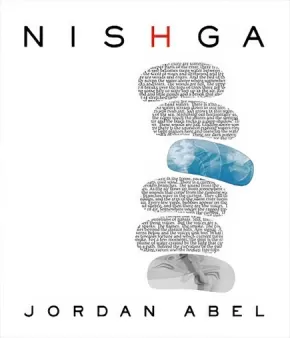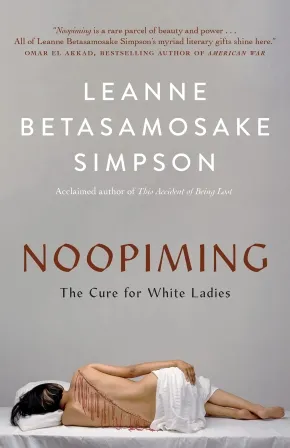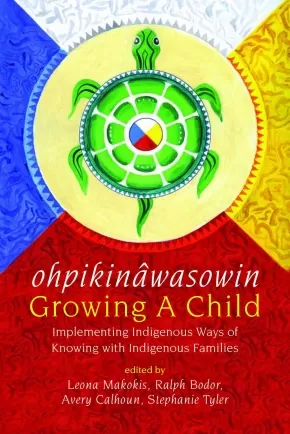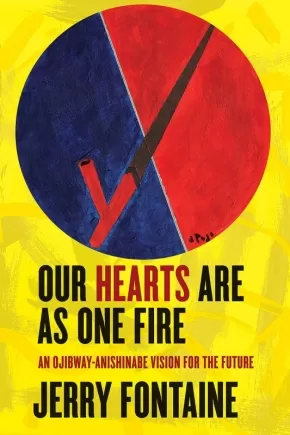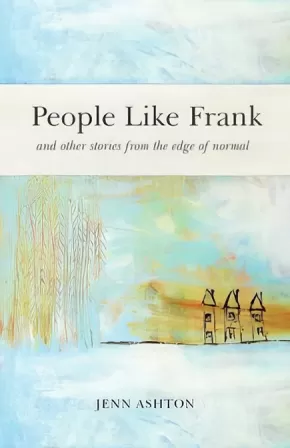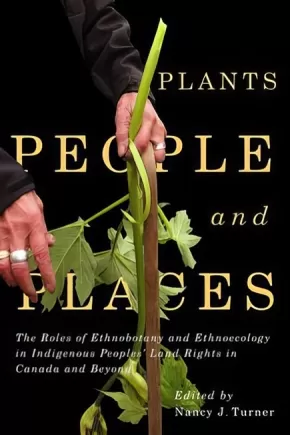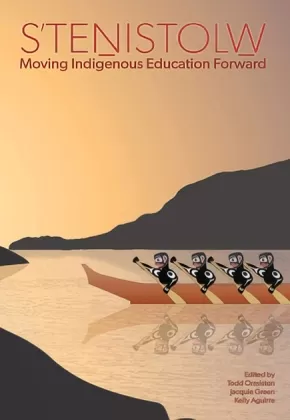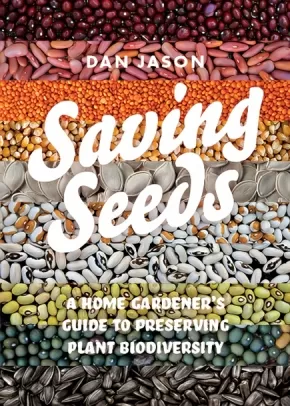
Adult Book
826
-
840
of
1380 Results;
Sort By
Go To
of 92
Niqiliurniq: A Cookbook from Igloolik
$24.95
Format:
Paperback
Text Content Territories:
Indigenous Canadian; Inuit;
ISBN / Barcode: 9781772272673
Synopsis:
Synopsis:
“Food is life. Food is the key to vitality, goodness, happiness, and a strong body and mind.”
Compiled by five women living in Igloolik, Nunavut, this collection of recipes brings together healthy traditional country foods—like seal, Arctic char, and caribou—with store-bought produce to create delicious meals that can be an alternative to pre-packaged foods. With details on food safety and storage, as well as information on how to build a healthy, nutritious diet, this book will help even novice cooks feel empowered to begin cooking from scratch at home.
With tasty recipes from land and sea—from Arctic char pizza to caribou chilli—this beautifully photographed cookbook provides wholesome, hearty meals that will become family favourites for years to come.
Additional Information
114 pages | 7.00" x 10.00" | colour photographs | Paperback
Nishga (HC) (1 in Stock)
$32.95
Format:
Hardcover
Text Content Territories:
Indigenous Canadian; First Nations; Nisga'a;
ISBN / Barcode: 9780771007903
Synopsis:
Synopsis:
From Griffin Poetry Prize winner Jordan Abel comes a groundbreaking and emotionally devastating autobiographical meditation on the complicated legacies that Canada's reservation school system has cast on his grandparents', his parents' and his own generation.
NISHGA is a deeply personal and autobiographical book that attempts to address the complications of contemporary Indigenous existence. As a Nisga'a writer, Jordan Abel often finds himself in a position where he is asked to explain his relationship to Nisga'a language, Nisga'a community, and Nisga'a cultural knowledge. However, as an intergenerational survivor of residential school--both of his grandparents attended the same residential school in Chilliwack, British Columbia--his relationship to his own Indigenous identity is complicated to say the least.
NISHGA explores those complications and is invested in understanding how the colonial violence originating at the Coqualeetza Indian Residential School impacted his grandparents' generation, then his father's generation, and ultimately his own. The project is rooted in a desire to illuminate the realities of intergenerational survivors of residential school, but sheds light on Indigenous experiences that may not seem to be immediately (or inherently) Indigenous.
Drawing on autobiography, a series of interconnected documents (including pieces of memoir, transcriptions of talks, and photography), NISHGA is a book about confronting difficult truths and it is about how both Indigenous and non-Indigenous peoples engage with a history of colonial violence that is quite often rendered invisible.
Reviews
“With NISHGA, Jordan Abel has reinvented the memoir, incorporating personal anecdotes, archival footage, legal documentation, photos and concrete poetry to create an unforgettable portrait of an Indigenous artist trying to find his place in a world that insists Indigeneity can only ever be the things that he is not. Abel deftly shows us the devastating impact this gate-keeping has had on those who, through no decisions of their own, have been ripped from our communities and forced to claw their way back home, or to a semblance of home, often unassisted. This is a brave, vulnerable, brilliant work that will change the face of nonfiction, as well as the conversations around what constitutes Indigenous identity. It's a work I will return to again and again.” —Alicia Elliott, author of A Mind Spread Out on the Ground
“In NISHGA, Jordan Abel puts to use the documentary impulse that has already established him as an artist of inimitable methodological flair. By way of a mixture of testimonial vignettes, recordings of academic talks, found text/art, and visual art/concrete poetry, Abel sculpts a narrative of dislocation and self-examination that pressurizes received notions of “Canada” and “history” and “art” and “literature” and “belonging” and “forgiveness.” Yes, it is a book of that magnitude, of that enormity and power. By its Afterword, NISHGA adds up to a work of personal and national reckoning that is by turns heartbreaking and scathing.” —Billy-Ray Belcourt, author of NDN Coping Mechanisms and A History of My Brief Body
"This is a heart-shattering read, and will also be a blanket for others looking for home. NISHGA is a work of absolute courage and vulnerability. I am in complete awe of the sorrow here and the bravery. Mahsi cho, Jordan.” —Richard Van Camp, author of Moccasin Square Gardens
“Jordan Abel digs deeply into the questions we should all be asking. Questions that need no explanation but ones that require us to crawl back into our bones, back into the marrow of our understanding. NISHGA is a ceremony where we need to be silent. Where we need to listen.” —Gregory Scofield, author of Witness, I Am
Additional Information
288 pages | 7.25" x 8.62"
Noopiming: The Cure for White Ladies
$22.99
Format:
Paperback
Text Content Territories:
Indigenous Canadian; First Nations; Anishinaabeg;
ISBN / Barcode: 9781487007645
Synopsis:
Synopsis:
Award-winning Nishnaabeg storyteller and writer Leanne Betasamosake Simpson returns with a bold reimagination of the novel, one that combines narrative and poetic fragments through a careful and fierce reclamation of Anishinaabe aesthetics.
Mashkawaji (they/them) lies frozen in the ice, remembering a long-ago time of hopeless connection and now finding freedom and solace in isolated suspension. They introduce us to the seven main characters: Akiwenzii, the old man who represents the narrator’s will; Ninaatig, the maple tree who represents their lungs; Mindimooyenh, the old woman who represents their conscience; Sabe, the giant who represents their marrow; Adik, the caribou who represents their nervous system; Asin, the human who represents their eyes and ears; and Lucy, the human who represents their brain. Each attempts to commune with the unnatural urban-settler world, a world of SpongeBob Band-Aids, Ziploc baggies, Fjällräven Kånken backpacks, and coffee mugs emblazoned with institutional logos. And each searches out the natural world, only to discover those pockets that still exist are owned, contained, counted, and consumed. Cut off from nature, the characters are cut off from their natural selves.
Noopiming is Anishinaabemowin for “in the bush,” and the title is a response to English Canadian settler and author Susanna Moodie’s 1852 memoir Roughing It in the Bush. To read Simpson’s work is an act of decolonization, degentrification, and willful resistance to the perpetuation and dissemination of centuries-old colonial myth-making. It is a lived experience. It is a breaking open of the self to a world alive with people, animals, ancestors, and spirits, who are all busy with the daily labours of healing — healing not only themselves, but their individual pieces of the network, of the web that connects them all together. Enter and be changed.
Reviews
"Noopiming is a rare parcel of beauty and power, at once a creator and destroyer of forms. All of Leanne Betasamosake Simpson’s myriad literary gifts shine here — her scalpel-sharp humour, her eye for the smallest human details, the prodigious scope of her imaginative and poetic generosity. The result is a book at once fierce, uproarious, heartbreaking, and, throughout and above all else, rooted in love.” — Omar El Akkad, bestselling author of American War
"Noopiming is a novel that is as philosophically generative as it is stylistically original. It begins with someone who is frozen in a lake, waiting, and from whom we learn that: ‘being frozen in the lake is another kind of life.’ Leanne Betasamosake Simpson’s expansive work explores the indivisibility of beings — old woman, old man, tree, caribou, stone, ice, spirit, geese, the brain, and more, all watching, grieving, thinking, acting, and listening amidst the ongoing and quotidian urgencies of capital. They are sleepless, ceaseless, trying to alter and to recode the world of consumerism, and their survival means that they must daily and collectively reconstruct existence in the city and its coterminous forests. Noopiming is far ahead of us in so many registers of story, language, and worldview; its cumulative effect is a new cosmography.” — Dionne Brand, award-winning author of Theory
"This imaginative book is what would happen if we gave pen and paper to the deepest, most secretive parts of ourselves. Down to the fibres, down to each breath, Leanne Betasamosake Simpson dares to not only explore the humanity of a character, but the humanity of the parts that make us whole, in a world running on empty.” — Catherine Hernandez, bestselling author of Scarborough
"Leanne Betasamosake Simpson’s Noopiming once again confirms her position as a brilliant, daring experimentalist and a beautiful, radical portraitist of contemporary NDN life. The prose hums with a lovingness that moved me to tears and with a humour that felt plucked right out of my rez adolescence. The chorus of thinkers, dreamers, revolutionaries, poets, and misfits that Simpson conjures here feels like a miracle. My heart ached and swelled for all of them. What I adored most about this book is that it has so little to do with the white gaze. Simpson writes for us, for NDNs, those made to make other kinds of beauty, to build other kinds of beautiful lives, where no one is looking. Noopiming is a book from the future! Simpson is our much-needed historian of the future!” — Billy-Ray Belcourt, award-winning author of This Wound is a World and NDN Coping Mechanisms
"How is it that Leanne Betasamosake Simpson’s fiction can feel both familiar and warm like old teachings and absolutely fresh and brand new? Is it even fiction? Noopiming seems to exist somewhere in the in-between, with all the best parts of poetry and story. As always, I am in awe of Leanne Betasamosake Simpson, prolific in every way.” — Katherena Vermette, bestselling author of The Break
Additional Information
368 pages | 5.50" x 8.50"
ohpikinâwasowin / Growing a Child: Implementing Indigenous Ways of Knowing with Indigenous Families
$33.00
Editors:
Format:
Paperback
Text Content Territories:
Indigenous Canadian; First Nations; Blackfoot Confederacy (Siksikaitsitapi); Cree (Nehiyawak);
Grade Levels: University/College;
ISBN / Barcode: 9781773632278
Synopsis:
Synopsis:
Western theory and practice are over-represented in child welfare services for Indigenous peoples, not the other way around. Contributors to this collection invert the long-held, colonial relationship between Indigenous peoples and systems of child welfare in Canada. By understanding the problem as the prevalence of the Western universe in child welfare services rather than Indigenous peoples, efforts to understand and support Indigenous children and families are fundamentally transformed. Child welfare for Indigenous peoples must be informed and guided by Indigenous practices and understandings. Privileging the iyiniw (First people, people of the land) universe leads to reinvigorating traditional knowledges, practices and ceremonies related to children and families that have existed for centuries.
The chapters of ohpikinâwasowin/Growing a Child describe wisdom-seeking journeys and service-provision changes that occurred in Treaty 6, Treaty 7, and Treaty 8 territory on Turtle Island. Many of the teachings are nehiyaw (Cree) and some are from the Blackfoot people. Taken together, this collection forms a whole related to the Turtle Lodge Teachings, which expresses nehiyaw stages of development, and works to undo the colonial trappings of Canada’s current child welfare system.
Educator Information
Table of Contents
Introduction: Entering the Circle (Leona Makokis, Ralph Bodor, Avery Calhoun, and Stephanie Tyler)
iyiniw tâpwêwin ekwa kiskeyitamowin (Leona Makokis, Ralph Bodor, Avery Calhoun, Stephanie Tyler, Amanda McLellan, Ariel Veldhuisen, Kristina Kopp, Suzanne McLeod, and Sharon Goulet)
miyawata. Family Teachings on Turtle Island (Carolyn Barker)
kayiwatisi. Indigenous Program Indicators (Carol Turner and Ralph Bodor)
ayahpatisi. Practice as Ceremony (Amber Dion, Stephanie Tyler, Christie Pace, and Karen Delver)
tâpwêwin. Foundations of wīcihitāsowin (Angie Pinder and Avery Calhoun)
kîseyihtamowin. miyo ohpikinâwasowin: Igniting Spiritual Fires (Kristina Kopp, Caleb Anacker, Angie Pinder, and Bonda Thompson)
ayawawasowin. pe kīwe Come Home: Indigenous Adoptee Re-Connection with Self, Family and Community (Fran Kuefler Jose and Judy McRee)
kakehtawewin. Bringing Ceremony Home: An Inaugural kiskinohamakewin (Stephanie Tyler and Avery Calhoun)
Conclusion: Closing the Circle
Glossary: English Meaning and Pronunciation of nehiyaw Words
Glossary: English Meaning of nehiyaw Kinship Terms
References
Index
Additional Information
224 pages | 6.00" x 9.00"
Our Hearts Are as One Fire: An Ojibway-Anishinabe Vision for the Future
$29.95
Format:
Paperback
Text Content Territories:
Indigenous Canadian; First Nations; Anishinaabeg; Ojibway;
Grade Levels: University/College;
ISBN / Barcode: 9780774862882
Synopsis:
Synopsis:
A vision shared. A manifesto. This remarkable work argues that Anishinabeg need to reconnect with non-colonized modes of thinking, social organization, and decision making in order to achieve genuine sovereignty. In Our Hearts Are as One Fire, Jerry Fontaine recounts the stories of three Ota’wa, Shawnee, and Ojibway-Anishinabe leaders who challenged aggressive colonial expansion – Obwandiac, Tecumtha, and Shingwauk. He weaves Ojibwaymowin language and knowledge with conversations with elders and descendants of the three leaders. The result is a book that reframes the history of Manitou Aki, sharing a vision of how Anishinabe spiritual, cultural, legal, and political principles will support the leaders of today and tomorrow.
Reviews
"A critically important manifesto written by an Anishinabe leader. Every First Nations leader in North America must read Our Hearts Are as One Fire. It is the book we have all been waiting for." — Matthew L.M. Fletcher, director of the Indigenous Law and Policy Center, Michigan State University
"makwa ogimaa presents an intimate story of Anishinabe traditional leadership, one that reflects the place of “an ethics of relationship” that is so urgently needed as we search for paradigms of leadership that once again connect us to each other and to the Earth."— Gregory A. Cajete, professor of Native American Studies and Education, University of New Mexico
Educator Information
Table of Contents
Foreword / Lee Anne Cameron
Ah-di-so-kay Anishinabeg / Traditional Storytellers
Maaitaa / Prologue
Nitam igo / Introduction
1 Gah-o-mah-mah-wahn-dah-wi-zid gah-ki-nah-gay-goo ji-gi-kayn-dah-so aki / A prophet is someone who has a completed view of the world
2 Obwandiac / The Man who Travelled and Stopped at Many Places
3 Tecumtha / He Walked Across
4 Shingwauk / The White Pine, Boss of All the Trees
5 N’swi-ish-ko-day-kawn Anishinabeg O’dish-ko-day-kawn / Our Hearts Are as One Fire
6 Meegwetch bi-zhin-dah-wi-yeg / Thank you for listening to me
Wayekwaase / It is finished
Appendix
Timeline
Glossary; Notes; Index
Additional Information
280 pages | 5.50" x 8.50"
Pathways of Reconciliation: Indigenous and Settler Approaches to Implementing the TRC's Calls to Action
$27.95
Editors:
Format:
Paperback
Text Content Territories:
Indigenous Canadian;
ISBN / Barcode: 9780887558542
Synopsis:
Synopsis:
Since the Truth and Reconciliation Commission released its Calls to Action in June 2015, governments, churches, non-profit, professional and community organizations, corporations, schools and universities, clubs and individuals have asked: “How can I/we participate in reconciliation?”
Recognizing that reconciliation is not only an ultimate goal, but a decolonizing process of journeying in ways that embody everyday acts of resistance, resurgence, and solidarity, coupled with renewed commitments to justice, dialogue, and relationship-building, Pathways of Reconciliation helps readers find their way forward.
The essays in Pathways of Reconciliation address the themes of reframing, learning and healing, researching, and living. They engage with different approaches to reconciliation (within a variety of reconciliation frameworks, either explicit or implicit) and illustrate the complexities of the reconciliation process itself. They canvass multiple and varied pathways of reconciliation, from Indigenous and non-Indigenous perspectives, reflecting a diversity of approaches to the mandate given to all Canadians by the TRC with its Calls to Action.
Together the authors — academics, practitioners, students and ordinary citizens — demonstrate the importance of trying and learning from new and creative approaches to thinking about and practicing reconciliation and reflect on what they have learned from their attempts (both successful and less successful) in the process.
Reviews
“Alerts Canadians to what must be done if we are to seriously embrace the goal of decolonizing relations with Indigenous peoples." – Peter Russell, Professor Emeritus, Department of Political Science, University of Toronto
Educator & Series Information
Table of Contents
Introduction
Ch. 1—Paved with Comfortable Intentions: Moving Beyond Liberal Multiculturalism and Civil Rights Frames on the Road to Transformative Reconciliation
Ch. 2—Perceptions on Truth and Reconciliation: Lessons from Gacaca in Post-Genocide Rwanda
Ch. 3—Monitoring That Reconciles: Reflecting on the TRC’s Call for a National Council for Reconciliation
Ch. 4—A Move to Distract: Mobilizing Truth and Reconciliation in Settler Colonial States
Ch. 5—Teaching Truth Before Reconciliation
Ch. 6—“The Honour of Righting a Wrong:” Circles for Reconciliation
Ch. 7—What Does Reconciliation Mean to Newcomers Post-TRC?
Ch. 8—Healing from Residential School Experiences: Support Workers and Elders on Healing and the Role of Mental Health Professionals
Ch. 9—Learning and reconciliation for the collaborative governance of forestland in northwestern Ontario, Canada
Ch. 10—Bending to the Prevailing Wind: How Apology Repetition Helps Speakers and Hearers Walk Together
Ch. 11—How do I reconcile Child and Family Services’ practice of cultural genocide with my own practice as a CFS social worker?
Ch. 12—Repatriation, Reconciliation, and Refiguring Relationships. A Case study of the return of children’s artwork from the Alberni Indian Residential School to Survivors and their families
Other contributors to this work include: Peter Bush, Tracey Carr, Brian Chartier, Mary Anne Clarke, Ko’ona Cochrane, Aimée Craft, Raymond F. Currie, Rachel (Yacaa?ał) George, Erica Jurgens, Régine Uwibereyeho King, Sheryl Lightfoot, David B. MacDonald, Benjamin Maiangwa, Cody O’Neil, Paulette Regan, Cathy Rocke, John Sinclair, Andrea Walsh, Melanie Zurba
This book is part of the Perceptions on Truth and Reconciliation series.
Additional Information
336 pages | 6.00" x 9.00"
People Like Frank: And Other Stories from the Edge of Normal
$19.95
ISBN / Barcode: 9781777010164
Synopsis:
Synopsis:
On the edge of normal, challenges take many forms — the everday can be an adventure and the ordinary a triumph.
A young woman in a group home investigates a mysterious piece of knitting. An obsessed bag boy does grim battle with a squirrel. A woman, an asparagus bag and a garbageman have a tumultuous short-term relationship. Otherwise unremarkable achievements become epic on the edge of normal.
This uplifting collection explores the world through the eyes of protagonists whose perspectives are informed by their unique circumstances. Some are struggling with physical challenges while others seek to overcome psychological barriers. Far from being defined by their limitations, these characters revel in achievements others take for granted and find wonder in unexpected places. By celebrating the private triumphs of people who are all too often dismissed, Ashton reminds us all of our own humanity.
Additional Information
200 pages | 5.50" x 8.00"
Plants, People, and Places: The Roles of Ethnobotany and Ethnoecology in Indigenous Peoples' Land Rights in Canada and Beyond
$55.00
Editors:
Format:
Hardcover
Text Content Territories:
Indigenous American; Indigenous Canadian; Indigenous European; Indigenous New Zealander; Indigenous;
Grade Levels: University/College;
ISBN / Barcode: 9780228001836
Synopsis:
Synopsis:
A powerful case for the essential role of plants and environments in recognizing Indigenous Peoples' land rights around the world.
For millennia, plants and their habitats have been fundamental to the lives of Indigenous Peoples - as sources of food and nutrition, medicines, and technological materials - and central to ceremonial traditions, spiritual beliefs, narratives, and language. While the First Peoples of Canada and other parts of the world have developed deep cultural understandings of plants and their environments, this knowledge is often underrecognized in debates about land rights and title, reconciliation, treaty negotiations, and traditional territories. Plants, People, and Places argues that the time is long past due to recognize and accommodate Indigenous Peoples' relationships with plants and their ecosystems. Essays in this volume, by leading voices in philosophy, Indigenous law, and environmental sustainability, consider the critical importance of botanical and ecological knowledge to land rights and related legal and government policy, planning, and decision making in Canada, the United States, Sweden, and New Zealand. Analyzing specific cases in which Indigenous Peoples' inherent rights to the environment have been denied or restricted, this collection promotes future prosperity through more effective and just recognition of the historical use of and care for plants in Indigenous cultures. A timely book featuring Indigenous perspectives on reconciliation, environmental sustainability, and pathways toward ethnoecological restoration, Plants, People, and Places reveals how much there is to learn from the history of human relationships with nature.
Reviews
"Nancy Turner is respected at every level of the field and this book brings together many of the collaborators she has worked with throughout her career. The chapters they contribute are impressive, and as a whole they comprise the collective research and experience of over forty authors all demonstrating how Indigenous peoples, past and present, have contributed to land rights, policies, ethics, and caring for the earth." - Scott Herron, Ferris State University
Educator Information
Contributors include Arthur Adolph (St'at'imc First Nation), Chelsey Geralda Armstrong (Smithsonian Institution), Jeannette Armstrong (Sylix First Nation; UBC Okanagan), E. Richard Atleo (Ahousaht First Nation; UVic), Marlene Atleo (Ahousaht First Nation; U Manitoba), Janelle Baker (Athabasca U), Kelly Bannister (UVic), Michael Bendle (Woodward & Co. Lawyers, Victoria), Ingele Bergman (Sweden), Linda Black Elk (Catawba Nation, USA), Malin Brännström (Sweden), Véronique Bussières (Concordia U), Jeff Corntassel (Cherokee Nation; UVic), Alain Cuerrier (U Montréal; Montreal Botanical Garden), Deborah Curran (UVic), Douglas Deur (Portland State U, USA), Spencer Greening (Gitga'ata First Nation; P.E. Trudeau Scholar; SFU), Marianne Ignace (Secwepemc First Nation; SFU), Chief Ronald Ignace (Secwepemc First Nation; SFU), Justine James (Quinault Nation, USA), Leigh Joseph (Squamish First Nation; UVic), Dana Lepofsky (SFU), John S. Lutz (UVic), Darcy Mathews (UVic), Letitia M. McCune (BotanyDoc LLC, Tucson), Aaron Mills (Couchiching First Nation [Anishinaabe], Treaty #3 Territory, and North Bay, Robinson-Huron Treaty Territory; P.E. Trudeau Scholar; McGill), Monica Montgomery (U Hawaii), Monica Mulrennan (Concordia U), Val Napoleon (Saulteau First Nation - Treaty 8; House of Luuxhon, Ganada, Gitanyow; UVic), Lars Östlund (Sweden), Kim Recalma-Clutesi (Qualicum First Nation), David Robbins (Woodward & Co. Lawyers, Victoria), Jacinta Ruru (Maori; New Zealand), Stuart Rush (BC Law Society), Camilla Sandström (Sweden), Pamela Spalding (UVic), John Ralston Saul, CC, OOnt (Toronto), James Tully, FRSC (UVic), Mehana Vaughan (U Hawaii), and William White (Snuneymuxw First Nation).
Not all contributors to this work are Indigenous, Canadian, or Indigenous Canadian. It is up to readers to determine if this work is authentic or useful for their purposes.
Table of Contents
Tables and Figures xiii
Benediction: The Teachings of Chief Kwaxsistalla Adam Dick and the Atla’gimma (“Spirits of the Forest”) Dance xvii
Douglas Deur (Moxmowisa), Kim Recalma-Clutesi (Oqwilowgwa), and William White (Kasalid/Xelimulh)
Preface and Acknowledgments xxv
Nancy J. Turner
1 Introduction: Making a Place for Indigenous Botanical Knowledge and Environmental Values in Land-Use Planning and Decision Making 3
Nancy J. Turner, Pamela Spalding, and Douglas Deur
SECTION ONE - INDIGENOUS PEOPLES’ RELATIONSHIPS TO PLANTS AND TERRITORY IN CANADA
Introduction 33
Nancy J. Turner
2 Living from the Land: Food Security and Food Sovereignty Today and into the Future 36
Jeannette Armstrong
3 Nuucaan?ul Plants and Habitats as Reflected in Oral Traditions: Since Raven and Thunderbird Roamed 51
Marlene Atleo (?eh ?eh nah tuu k?iss)
4 Tamarack and Tobacco 65
Aaron Mills
5 Xáxli’p Survival Territory: Colonialism, Industrial Land Use, and the Biocultural Sustainability of the Xáxli’p within the Southern Interior of British Columbia 70
Arthur Adolph
SECTION TWO - HISTORICAL PERSPECTIVES ON PLANT-PEOPLE RELATIONSHIPS IN CANADA
Introduction 83
Nancy J. Turner
6 Understanding the Past for the Future: Archaeology, Plants, and First Nations’ Land Use and Rights 86
Dana Lepofsky, Chelsey Geralda Armstrong, Darcy Mathews, and Spencer Greening
7 Preparing Eden: Indigenous Land Use and European Settlement on Southern Vancouver Island 107
John Sutton Lutz
8 A Place Called Pi´psell: An Indigenous Cultural Keystone Place, Mining, and Secwépemc Law 131
Marianne Ignace and Chief Ronald E. Ignace
9 Traditional Plant Medicines and the Protection of Traditional Harvesting Sites 151
Letitia M. McCune and Alain Cuerrier
SECTION THREE - ETHNOECOLOGY AND THE LAW IN THE INTERNATIONAL ARENA
Introduction 169
Nancy J. Turner
10 From Traplines to Pipelines: Oil Sands and the Pollution of Berries and Sacred Lands from Northern Alberta to North Dakota 173
Linda Black Elk and Janelle Marie Baker
11 The Legal Application of Ethnoecology: The Girjas Sami Village versus the Swedish State 188
Lars Östlund, Ingela Bergman, Camilla Sandström, and Malin Brännström
12 Tane Mahuta: The Lord of the Forest in Aotearoa New Zealand, His Children, and the Law 203
Jacinta Ruru
13 Cultivating the Imagined Wilderness: Contested Native American Plant-Gathering Traditions in America’s National Parks 220
Douglas Deur and Justine E. James Jr
14 Kipuka Kuleana: Restoring Reciprocity to Coastal Land Tenure and Resource Use in Hawai?i 238
Monica Montgomery and Mehana Blaich Vaughan
SECTION FOUR - ETHNOECOLOGY, LAW, AND POLICY IN THE CURRENT CONTEXT
Introduction 251
Nancy J. Turner
15 Right Relationships: Legal and Ethical Context for Indigenous Peoples’ Land Rights and Responsibilities 254
Kelly Bannister
16 Ethnoecology and Indigenous Legal Traditions in Environmental Governance 269
Deborah Curran and Val Napoleon
17 Indigenous Environmental Stewardship: Do Mechanisms of Biodiversity Conservation Align with or Undermine It? 282
Monica E. Mulrennan and Véronique Bussières
18 Tsilhqot’in Nation Aboriginal Title: Ethnoecological and Ethnobotanical Evidence and the Roles and Obligations of the Expert Witness 313
David M. Robbins and Michael Bendle
19 Plants, Habitats, and Litigation for Indigenous Peoples in Canada 329
Stuart Rush, QC
SECTION FIVE - DRAWING STRENGTH AND INSPIRATION FROM PEOPLE, PLANTS, AND LANDS THROUGH JUSTICE, EQUITY, EDUCATION, AND PARTNERSHIPS
Introduction 347
Nancy J. Turner
20 Restorying Indigenous Landscapes: Community Regeneration and Resurgence 350
Jeff Corntassel
21 Partnerships of Hope: How Ethnoecology Can Support Robust Co-Management Agreements between Public Governments and Indigenous Peoples 366
Pamela Spalding
22 “Passing It On”: Renewal of Indigenous Plant Knowledge Systems and Indigenous Approaches to Education 386
Leigh Joseph (Styawat)
23 On Resurgence and Transformative Reconciliation 402
James Tully
24 Retrospective and Concluding Thoughts 419
Nancy J. Turner with E. Richard Atleo (Umeek) and John Ralston Saul
Epilogue: Native Plants, Indigenous Societies, and the Land in Canada’s Future 436
Douglas Deur (Moxmowisa), Nancy J. Turner (Galitsimga), and Kim Recalma-Clutesi (Oqwilowgwa)
Contributors 443
Index 459
Benediction: The Teachings of Chief Kwaxsistalla Adam Dick and the Atla’gimma (“Spirits of the Forest”) Dance xvii
Douglas Deur (Moxmowisa), Kim Recalma-Clutesi (Oqwilowgwa), and William White (Kasalid/Xelimulh)
Preface and Acknowledgments xxv
Nancy J. Turner
1 Introduction: Making a Place for Indigenous Botanical Knowledge and Environmental Values in Land-Use Planning and Decision Making 3
Nancy J. Turner, Pamela Spalding, and Douglas Deur
SECTION ONE - INDIGENOUS PEOPLES’ RELATIONSHIPS TO PLANTS AND TERRITORY IN CANADA
Introduction 33
Nancy J. Turner
2 Living from the Land: Food Security and Food Sovereignty Today and into the Future 36
Jeannette Armstrong
3 Nuucaan?ul Plants and Habitats as Reflected in Oral Traditions: Since Raven and Thunderbird Roamed 51
Marlene Atleo (?eh ?eh nah tuu k?iss)
4 Tamarack and Tobacco 65
Aaron Mills
5 Xáxli’p Survival Territory: Colonialism, Industrial Land Use, and the Biocultural Sustainability of the Xáxli’p within the Southern Interior of British Columbia 70
Arthur Adolph
SECTION TWO - HISTORICAL PERSPECTIVES ON PLANT-PEOPLE RELATIONSHIPS IN CANADA
Introduction 83
Nancy J. Turner
6 Understanding the Past for the Future: Archaeology, Plants, and First Nations’ Land Use and Rights 86
Dana Lepofsky, Chelsey Geralda Armstrong, Darcy Mathews, and Spencer Greening
7 Preparing Eden: Indigenous Land Use and European Settlement on Southern Vancouver Island 107
John Sutton Lutz
8 A Place Called Pi´psell: An Indigenous Cultural Keystone Place, Mining, and Secwépemc Law 131
Marianne Ignace and Chief Ronald E. Ignace
9 Traditional Plant Medicines and the Protection of Traditional Harvesting Sites 151
Letitia M. McCune and Alain Cuerrier
SECTION THREE - ETHNOECOLOGY AND THE LAW IN THE INTERNATIONAL ARENA
Introduction 169
Nancy J. Turner
10 From Traplines to Pipelines: Oil Sands and the Pollution of Berries and Sacred Lands from Northern Alberta to North Dakota 173
Linda Black Elk and Janelle Marie Baker
11 The Legal Application of Ethnoecology: The Girjas Sami Village versus the Swedish State 188
Lars Östlund, Ingela Bergman, Camilla Sandström, and Malin Brännström
12 Tane Mahuta: The Lord of the Forest in Aotearoa New Zealand, His Children, and the Law 203
Jacinta Ruru
13 Cultivating the Imagined Wilderness: Contested Native American Plant-Gathering Traditions in America’s National Parks 220
Douglas Deur and Justine E. James Jr
14 Kipuka Kuleana: Restoring Reciprocity to Coastal Land Tenure and Resource Use in Hawai?i 238
Monica Montgomery and Mehana Blaich Vaughan
SECTION FOUR - ETHNOECOLOGY, LAW, AND POLICY IN THE CURRENT CONTEXT
Introduction 251
Nancy J. Turner
15 Right Relationships: Legal and Ethical Context for Indigenous Peoples’ Land Rights and Responsibilities 254
Kelly Bannister
16 Ethnoecology and Indigenous Legal Traditions in Environmental Governance 269
Deborah Curran and Val Napoleon
17 Indigenous Environmental Stewardship: Do Mechanisms of Biodiversity Conservation Align with or Undermine It? 282
Monica E. Mulrennan and Véronique Bussières
18 Tsilhqot’in Nation Aboriginal Title: Ethnoecological and Ethnobotanical Evidence and the Roles and Obligations of the Expert Witness 313
David M. Robbins and Michael Bendle
19 Plants, Habitats, and Litigation for Indigenous Peoples in Canada 329
Stuart Rush, QC
SECTION FIVE - DRAWING STRENGTH AND INSPIRATION FROM PEOPLE, PLANTS, AND LANDS THROUGH JUSTICE, EQUITY, EDUCATION, AND PARTNERSHIPS
Introduction 347
Nancy J. Turner
20 Restorying Indigenous Landscapes: Community Regeneration and Resurgence 350
Jeff Corntassel
21 Partnerships of Hope: How Ethnoecology Can Support Robust Co-Management Agreements between Public Governments and Indigenous Peoples 366
Pamela Spalding
22 “Passing It On”: Renewal of Indigenous Plant Knowledge Systems and Indigenous Approaches to Education 386
Leigh Joseph (Styawat)
23 On Resurgence and Transformative Reconciliation 402
James Tully
24 Retrospective and Concluding Thoughts 419
Nancy J. Turner with E. Richard Atleo (Umeek) and John Ralston Saul
Epilogue: Native Plants, Indigenous Societies, and the Land in Canada’s Future 436
Douglas Deur (Moxmowisa), Nancy J. Turner (Galitsimga), and Kim Recalma-Clutesi (Oqwilowgwa)
Contributors 443
Index 459
Additional Information
554 pages | 6.25" x 9.25"
Postcolonial Love Poem
$21.00
Format:
Paperback
Text Content Territories:
Indigenous American; Native American; Mojave;
ISBN / Barcode: 9781644450147
Synopsis:
Synopsis:
Postcolonial Love Poem is an anthem of desire against erasure. Natalie Diaz’s brilliant second collection demands that every body carried in its pages—bodies of language, land, rivers, suffering brothers, enemies, and lovers—be touched and held as beloveds. Through these poems, the wounds inflicted by America onto an indigenous people are allowed to bloom pleasure and tenderness: “Let me call my anxiety, desire, then. / Let me call it, a garden.” In this new lyrical landscape, the bodies of indigenous, Latinx, black, and brown women are simultaneously the body politic and the body ecstatic. In claiming this autonomy of desire, language is pushed to its dark edges, the astonishing dunefields and forests where pleasure and love are both grief and joy, violence and sensuality.
Diaz defies the conditions from which she writes, a nation whose creation predicated the diminishment and ultimate erasure of bodies like hers and the people she loves: “I am doing my best to not become a museum / of myself. I am doing my best to breathe in and out. // I am begging: Let me be lonely but not invisible.” Postcolonial Love Poem unravels notions of American goodness and creates something more powerful than hope—in it, a future is built, future being a matrix of the choices we make now, and in these poems, Diaz chooses love.
Additional Information
80 pages | 6.00" x 9.00"
Powerful Writing Structures: Brain Pocket Strategies for Supporting a Year-Long Writing Program
$32.95
Format:
Paperback
ISBN / Barcode: 9781551383446
Synopsis:
Synopsis:
This timely book uses thinking structures to deepen student writing. It revolves around brain pockets to help students appreciate the qualities of different writing forms. Some powerful examples include memory pockets for personal narrative writing, fact pockets for nonfiction, and imagination pockets for story writing. Detailed lesson plans are featured along with sample anchor books and book lists. Based on extensive classroom testing, this unique approach to teaching writing is illustrated by student samples throughout the book. Suggestions for setting up an effective writing program and assessment tips for guiding instruction complete this comprehensive approach to developing a year-long writing program.
Educator Information
Powerful Writing Structures details how to set up an effective writing program that focuses on process rather than product.
Includes detailed lessons that focus on personal narrative, nonfiction and story writing.
Includes book lists of the best children’s books to anchor, support and extend lessons, student examples help illustrate how the strategies work in real classrooms.
Additional Information
160 pages | 8.38" x 10.88"
Red: Un manga haïda
$19.95
Artists:
Format:
Paperback
Text Content Territories:
Indigenous Canadian; First Nations; Haida;
Reading Level: N/A
ISBN / Barcode: 9782925064060
Synopsis:
Synopsis:
Tiré d’un classique de la littérature haïda, ce roman graphique spectaculaire tout couleur nous raconte l’histoire tragique d’un chef autochtone si aveuglé par la revanche qu’il conduit sa communauté vers la guerre et la destruction. Red est le fier chef d’un petit village dans une des îles de la côte nord-ouest de la Colombie-Britannique. Sa soeur qui a été enlevée jadis par des pilleurs est localisée récemment dans un village environnant. Red s’engage à la sauver et à prendre sa revanche sur ses ravisseurs.Le livre comprend 108 pages illustrées et peintes à la main. Il est un métissage adroit entre l’imaginaire haïda et le manga japonais. Cet impressionnant roman d’action graphique sonne l’alarme sur les effets dévastateurs de la rage et de la vengeance.
Educator Information
This book is available in English: Red: A Haida Manga
Additional Information
122 pages | 8.50" x 9.00" | Paperback
Redbone: The True Story of a Native American Rock Band
$25.99
Artists:
Format:
Paperback
Text Content Territories:
Indigenous American; Native American; Shoshone; Indigenous Central American; Indigenous Peoples in Mexico; Yaqui (Yoeme);
ISBN / Barcode: 9781684057146
Synopsis:
Synopsis:
Experience the riveting, powerful story of the Native American civil rights movement and the resulting struggle for identity told through the high-flying career of West Coast rock 'n' roll pioneers Redbone.
You've heard the hit song "Come and Get Your Love" in the movie Guardians of the Galaxy, but the story of the band behind it is one of cultural, political, and social importance.
Brothers Pat and Lolly Vegas were talented Native American rock musicians that took the 1960s Sunset Strip by storm. They influenced The Doors and jammed with Jimmy Hendrix before he was "Jimi," and the idea of a band made up of all Native Americans soon followed. Determined to control their creative vision and maintain their cultural identity, they eventually signed a deal with Epic Records in 1969. But as the American Indian Movement gained momentum the band took a stand, choosing pride in their ancestry over continued commercial reward.
Created in cooperation of the Vegas family, authors Christian Staebler and Sonia Paoloni with artist Thibault Balahy take painstaking steps to ensure the historical accuracy of this important and often overlooked story of America's past. Part biography and part research journalism, Redbone tells a vivid story about this neglected chapter of American history.
Reviews
"Compelling reading for fans of roots rock and Native American history in middle school and up." —School Library Journal
"An entertaining, enlightening history for music fans. Balahy’s loose, energetic drawings; imaginative layouts; and playful use of color make everything pop." —Publishers Weekly
"Musicians with heart put their people before profits in an inspirational tale. Well-researched and well-paced, this book will introduce a new generation to the music and impact of Redbone." —Kirkus Reviews (Starred review)
"In some eyes, the guys in Redbone, still the most successful Native American rock band this country has produced, are indeed superheroes. Not all heroes wear capes, and some wear buckskin." —Houston Chronicle
"In the early sixties, Pat and his brother, Lolly, perform on the Sunset Strip, crossing paths with The Byrds, The Doors, and Jimi Hendrix, who gives the brothers the idea of forming 'an all Indian band. That'd make this country sit up.' The seed germinates and Redbone bursts forth. Staebler and Paoloni offer a lens onto aspects of the twentieth-century Native American struggle for civil rights and injustices like forced schooling and racist policing, as well as the 1968 birth of the American Indian Movement. Balahy's art is particularly splendid and well-varied in style for the complex subject matter." —Booklist
Additional Information
160 pages | 7.00" x 10.00"
Rougarou
$29.95
Format:
Paperback
Text Content Territories:
Indigenous Canadian; Métis;
Reading Level: N/A
ISBN / Barcode: 9782764626399
Synopsis:
Synopsis:
Joan a le cœur brisé. Voilà plus d’un an qu’elle s’épuise à chercher son mari, Victor, qui a disparu dans la nuit dès leur première dispute, le soir où il a suggéré de vendre à des promoteurs la terre ancestrale qu’elle a héritée de son père. Depuis, elle sillonne les routes de la baie Géorgienne, bien décidée à savoir si Victor est mort ou s’il l’a simplement laissé tomber, comme le pensent sa famille et tout le village métis d’Arcand. Elle croit d’ailleurs l’avoir retrouvé quand, après une soirée trop arrosée, une voix familière l’attire dans une tente d’évangélisation dressée au milieu d’un stationnement, mais l’homme qui apparaît devant elle n’a de Victor que les traits. Pourquoi ne la reconnaît-il pas? Et qui est ce révérend Eugene Wolff dont il dit porter le nom?Aidée de ses deux complices, un adolescent accro à Johnny Cash et une vieille femme aux remarques aussi sages qu’inconvenantes, Joan se mettra alors en quête de rappeler à cet inconnu qui il est vraiment. En chemin, elle découvrira que les histoires de peur de son enfance sont tout sauf des légendes et que, derrière les paroles bienveillantes de la congrégation du révérend Wolff, se cache un projet d’expropriation qui menace une fois encore sa communauté.S’inspirant de la figure du rougarou, cette créature mi-homme mi-loup qui hante l’imaginaire métis, Cherie Dimaline nous offre un roman palpitant, porté par le chagrin et la fureur d’une femme qui refuse d’accepter la perte de ses terres, de ses racines et des siens.« Follement divertissant, profond, essentiel. »Tommy Orange, The New York Times « Un thriller littéraire à lire absolument. »Publishers Weekly
Educator Information
This book is available in English: Empire of Wild
Additional Information
Paperback
S'TENISTOLW: Moving Indigenous Education Forward (5 in Stock, Out of Print)
$33.00
Format:
Paperback
Text Content Territories:
Indigenous Canadian;
Grade Levels: University/College;
ISBN / Barcode: 9781926476285
Synopsis:
Synopsis:
S’TENISTOLW is a SENĆOŦEN term referencing the concept of ‘moving forward’. This book highlights both the doing and being of Indigenous education. Authors share their knowledge on the themes of: Land-Based Learning; Supporting Learners; Indigenization; and Strengthening Alliances. Keynote writings by renowned Indigenous scholars Gregory Cajete, Graham Hingangaroa Smith, Linda Tuhiwai Smith and Kathy Absolon are intertwined throughout the book.
Reviews"
"This book is like a visit home, to talk with the wisest people you know on your reserve or in your neighbourhood. There is an intimacy in how each author shares their own stories of hope, insight and resilience. You will be nourished, strengthened, and inspired. You may be even gently chastised as you read about how Indigenous ways of learning are gaining ground in the educational settings around us. If you enjoy such visits you will treasure this book." — John Borrows, PhD, Canada Research Chair in Indigenous Law, University of Victoria
"S’TENISTOLW is a wonderful feast of stories, experiences, teachings, and approaches of educational and community leaders involved in Indigenous post-secondary education. Practitioners-scholars-leaders receive gifts of hope, inspiration, and transforming potential to live Indigenous education in good ways through innovative Indigenous pedagogies, relational theories, authentic community and land-based programs, and critical engagement." — Jo-Ann Archibald, PhD, Professor of Educational Studies, University of British Columbia
"I can’t wait to share this book! It offers timely and pivotal insights from leading theorists and practitioners about the transformational project of “Indigenizing” the academy and other institutions. I’m sure it will serve educators, students and community members alike as we think through complex questions of transformative, Indigenous knowledge production and education." — Kim Anderson, PhD Canada Research Chair in Indigenous Relationships, University of Guelph
Additional Information
166 pages | 6.00" x 9.00"
Saving Seeds: A Home Gardener's Guide to Preserving Plant Biodiversity
$14.95
Format:
Paperback
ISBN / Barcode: 9781550179002
Synopsis:
Synopsis:
Part garden guide, part manifesto, this is an invitation to preserve our dynamic, sustainable food supply -- one seed at a time.
Much of our food comes from seeds. But where do our seeds come from? And where are they going? For much of human history, farmers saved their own seed stocks to ensure a good harvest from year to year. In the mid-twentieth century, governments became involved in seed saving, creating massive seed libraries cataloguing thousands of varieties. This biodiversity has come under attack in recent decades, as corporations have replaced heirloom varieties with genetic engineering and costly trademarks. In such an agricultural climate, saving seeds becomes both a practical act of preservation and powerful act of protest.
Over half of Canadian households grow fruits, herbs, vegetables or flowers for personal use, according to Statistics Canada. And each of these home gardens has the potential to preserve vital biodiversity, if only we would let plants go to seed, harvest and preserve them. Saving Seeds is a clear and winsome introduction to the essentials of seed saving, from seed selection criteria to harvest and storage tips. It also addresses the role of seed-saving communities: local swaps, seed companies, friends and neighbours and even how the Internet can support this time-honoured practice.
In an era of community gardens, farmers markets and renewed interest in heirloom species, Saving Seeds is a timely call to ensure a more secure future for our seeds and ourselves.
Additional Information
96 pages | 5.00" x 7.00" | b&w illustrations
Sort By
Go To
of 92




